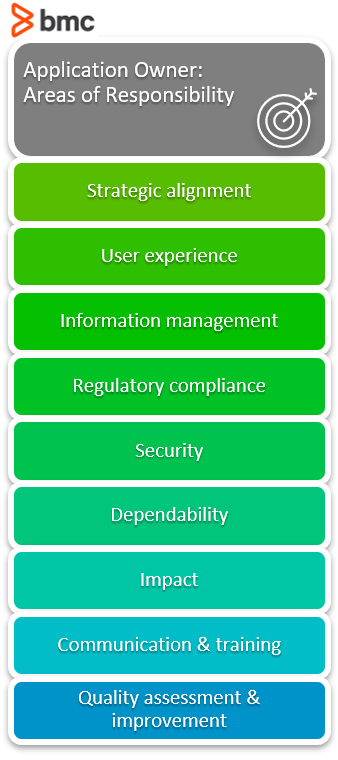What’s An App Owner? Application Owner Roles & Responsibilities


Software applications are a competitive advantage in the digital economy.
Enterprises embracing frameworks like DevOps and Agile are disrupting the market space with innovative software technologies and applications for the enterprise IT and consumer market segments. IT professionals and business executives work to understand how their apps are used, managing, and analyzing data processed and generated by the technologies.
Application ownership is an emerging role that entails three primary tasks:
Let’s take a look at the role of application owner.
The role of an Application Owner is not discrete, although most enterprise organizations have established well-structured and organized roles to perform these tasks. The responsibilities may be assigned to a variety of IT professionals from the domains of IT Operations, cloud architecture, business analysis, and even development professionals.
So, what exactly does an app owner do?
 The following job tasks are common among these IT professions when it comes to ownership of an application:
The following job tasks are common among these IT professions when it comes to ownership of an application:
Ensure that the application serves its intended purpose and delivers value to the business. The role of an application owner is to guide the software development lifecycle (SDLC) to performance gains that align with the business vision.
(Read about IT/business alignment.)
The application must meet the standards deemed acceptable by all stakeholders, customers, and partners. Application owners guide the development teams to find an optimal tradeoff between:
In order to maintain high competitive differentiation, the application should be able to access, process, and generate useful information. This information includes the data and IT workloads necessary to both:
Take the steps necessary to guarantee regulatory compliance. Work with external auditors to ensure a high standard of compliance to stringent global regulations ranging form HIPAA to GDPR as applicable.
(Learn more about compliance & security.)
Provide appropriate operational, management and technical controls that help mitigate and manage security risks facing software apps, network infrastructure, end users, and the business.
Define the service level agreement (SLA) metrics and requirements that will guarantee highly dependable performance as an optimal tradeoff with:
(Prepare for SLA breaches.)
Here, the application owner supports the business by prioritizing product backlog and helping deliver business outcomes such as user base growth.
An app owner will ensure that the technical and business decisions are made with confidence of business executives and engineering teams as necessary.
Identify areas of improvement and develop a long-term quality improvement program that encompasses the technology and business aspects of the software application.
The application owner role has evolved from the traditional project-centric owner approach. In DevOps organizations, the application owner takes a systems-thinking approach focused on the vision intended for the software applications. The modern application owner thinks in terms of the entire product lifecycle instead of the features that must be shipped with a specific technology-centric goal in mind.
A variety of functional and non-functional requirements are also considered as the application owner looks into the entire system associated with the software application.
These requirements are often labeled as Operational Requirements (ORs) and help teams understand exactly why and how the application lifecycle is designed to maximize the likelihood of achieving its business objectives.
The application owner contributes to the following key operational requirements in the DevOps SDLC program:
The Application Owner role typically requires a four-year Computer Science or relevant college degree and a few years of experience in development, QA, or business analysis.
Uniquely, the role requires applicants to demonstrate expertise in engineering as well as a strong business aptitude.